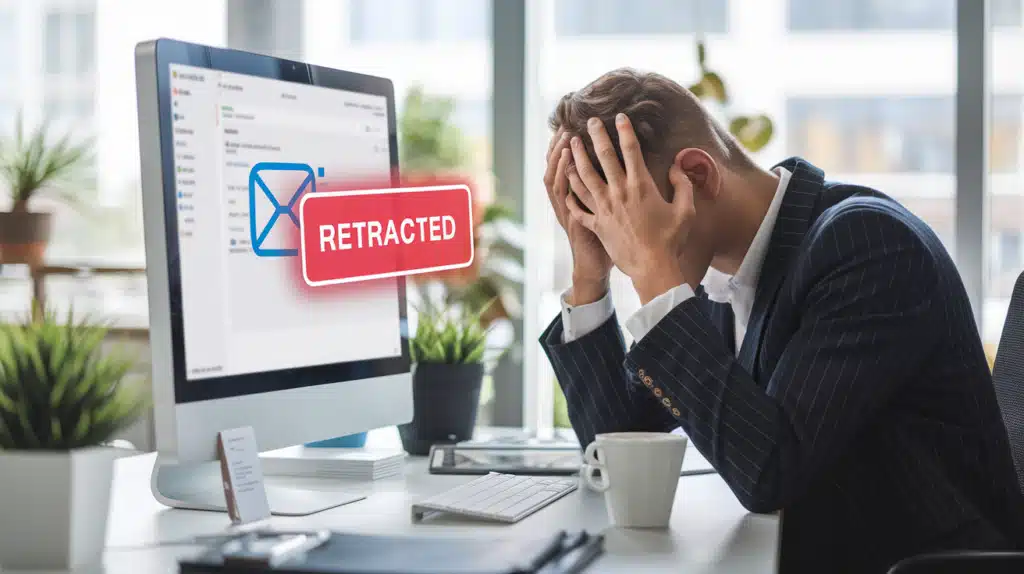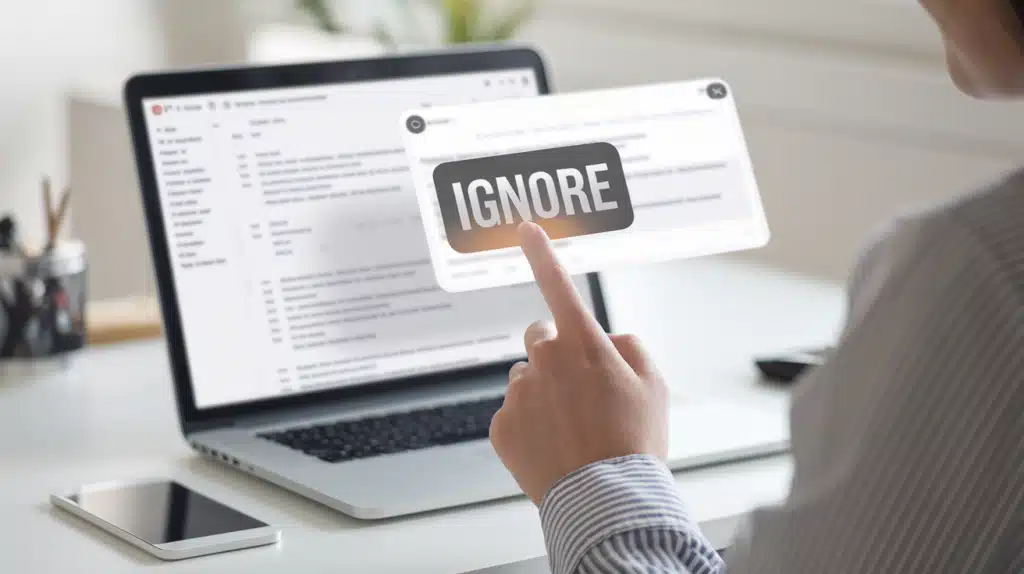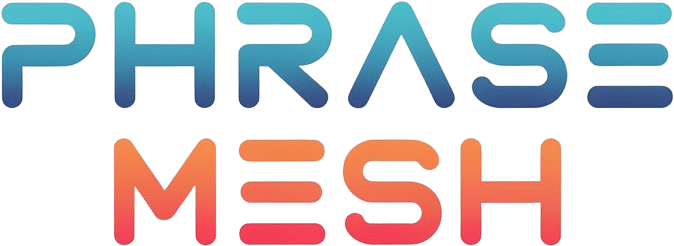Ever hit that “Send” button and immediately regretted it? We’ve all been there. In the fast-paced world of business communication, email mistakes happen. But fear not! There are plenty of ways to gracefully handle these situations and maintain professional email etiquette. Let’s dive into ten alternative phrases to “Please disregard my previous email” and explore some real-world scenarios where you might need to use them.
This blog will explore the typical costs at Sonic. You’ll learn what to expect before you visit. Whether you love their classic burgers or crave a refreshing drink, understanding Sonic prices can help you make informed choices. Dive in to discover more about the costs and enjoy your Sonic experience to the fullest.
What To Say Instead of “Please Disregard My Previous Email”
- “I’d like to rescind my last message”
- “Please ignore my previous correspondence”
- “I need to withdraw my earlier communication”
- “I’d like to cancel my prior email”
- “Please disregard the last email you received from me”
- “I need to revoke the email I just sent”
- “Kindly discard my last email”
- “Please consider my previous email null and void”
- “I’d appreciate if you could overlook my earlier message”
- “Let’s pretend that last email never happened”
- “I’d like to supersede my last email”
- “My apologies, but I need to retract my earlier message”
- “Please disregard and delete the email I sent at [time]”
- “I’m issuing a correction to my previous email”
- “Let’s start fresh – please ignore my last email”
- “I need to amend the information in my previous message”
- “Oops! Please disregard that last email – here’s what I meant to say”
- “I’m recalling my previous email due to inaccuracies”
- “Please reference this email instead of my previous one”
- “Kindly disregard my earlier email – I jumped the gun”
1. “I’d like to rescind my last message”

Sometimes, you need to take back what you’ve said. Using “rescind” adds a touch of formality that can be appropriate in certain professional contexts.
Example: Subject: Rescinding Previous Email Dear Mr. Thompson,
I’d like to rescind my last message regarding the quarterly budget report. Upon further review, I’ve noticed some discrepancies in the figures that need to be addressed before sharing. I’ll send an updated version once the corrections have been made.
Thank you for your understanding, Sarah
2. “Please ignore my previous correspondence”
This straightforward approach works well when you need to quickly nullify former message content without drawing too much attention to the error.
Example: Hey Lisa,
Please ignore my previous correspondence about the team lunch next Friday. I mixed up the dates – it’s actually scheduled for the following week. I’ll send out a new invitation with the correct details shortly.
Sorry for any confusion! Mike
3. “I need to withdraw my earlier communication”
When you’ve sent something that requires a more formal retraction, this phrase can help convey the seriousness of the situation.
Example: Subject: Withdrawal of Earlier Communication Dear Board Members,
I need to withdraw my earlier communication regarding the proposed merger. New information has come to light that significantly impacts our strategy. I’ll be scheduling an emergency meeting to discuss these developments in person.
Best regards, CEO Jane Smith
4. “I’d like to cancel my prior email”
This casual yet clear phrase works well for less formal workplace correspondence, especially when you need to quickly undo a mistaken message.
Example: Hi Alex,
I’d like to cancel my prior email about covering your shift this weekend. My plans have changed unexpectedly, and I’m now available. Let me know if you still need me to step in.
Cheers, Sam
5. “Please disregard the last email you received from me”

A polite and direct way to void preceding email content, this phrase leaves little room for misinterpretation.
Example: Dear Dr. Patel,
Please disregard the last email you received from me concerning your research grant application. I accidentally attached the wrong document. I’ll resend the correct version within the hour.
My apologies for any inconvenience, Grant Coordinator Mark Johnson
6. “I need to revoke the email I just sent”
When you need to emphatically recall sent email content, this phrase conveys urgency and importance.
Example: Subject: Urgent – Revoking Previous Email Hi Team,
I need to revoke the email I just sent about our new product launch date. There’s been a last-minute change in our production timeline. Please standby for an updated schedule, which I’ll distribute as soon as it’s confirmed.
Thanks for your patience, Project Manager Emily Chen
7. “Kindly discard my last email”
This gentler approach can be useful when you want to withdraw earlier communication without sounding too formal or alarming.
Example: Hey Chris,
Kindly discard my last email about the client presentation tomorrow. I’ve just heard back from them, and they’ve requested to reschedule for next week. I’ll update the team calendar once we’ve settled on a new date.
Best, Olivia
8. “Please consider my previous email null and void”
This phrase has a slightly legal tone, making it suitable for more serious email retraction situations in professional settings.
Example: Subject: Important Update – Previous Email Null and Void Dear Valued Client,
Please consider my previous email regarding your account status null and void. Our system experienced a glitch that resulted in incorrect information being sent out. We’re working diligently to resolve the issue and will provide accurate account details as soon as possible.
We sincerely apologize for any confusion or concern this may have caused.
Yours faithfully, Account Manager David Lee
9. “I’d appreciate if you could overlook my earlier message”
This polite phrasing works well when you want to ignore previous correspondence without making a big deal out of it.
Example: Hi Jessica,
I’d appreciate if you could overlook my earlier message about the project deadline. After speaking with the client, we’ve managed to negotiate an extension. I’ll send out a revised timeline later today.
Thanks for your flexibility, Tom
10. “Let’s pretend that last email never happened”

For more casual work relationships or lighter situations, this humorous approach can help diffuse any awkwardness caused by an email mistake.
Example: Subject: Oops! A do-over, please? Hey Ryan,
Let’s pretend that last email never happened, shall we? Turns out caffeine deprivation and autocorrect are a dangerous combo. I meant to ask if you’re free for a quick chat about the Henderson account, not a “quick cat” (though that does sound intriguing).
So, got a few minutes to talk shop today?
Still caffeinating, Lucy
11. “I’d like to supersede my last email”
This phrase adds a touch of formality and clarity, perfect for business communication in more official contexts.
Example: Subject: Superseding Previous Email – Project Timeline Update Dear Project Stakeholders,
I’d like to supersede my last email regarding the Q4 project timeline. After consultation with our IT department, we’ve identified opportunities to streamline several processes. I’ll be distributing a revised schedule that reflects these optimizations shortly.
Thank you for your patience, Project Manager Alison Reed
12. “My apologies, but I need to retract my earlier message”
This approach combines a brief email apology with a clear intention to recall sent email content.
Example: Hi Jamie,
My apologies, but I need to retract my earlier message about the client meeting on Thursday. I’ve just realized I double-booked myself. Can we reschedule for Friday at the same time? Let me know if that works for you.
Thanks for understanding, Alex
13. “Please disregard and delete the email I sent at [time]”
This direct approach is useful when you want to ensure the recipient not only ignores but also removes the incorrect information from their inbox.
Example: Subject: Urgent – Please Delete Previous Email Dear Dr. Martinez,
Please disregard and delete the email I sent at 2:15 PM today regarding patient records. It contained sensitive information that was meant for internal use only. I’ll resend the correct, redacted version shortly.
I apologize for any confusion this may have caused.
Best regards, Nurse Practitioner Sarah Johnson
14. “I’m issuing a correction to my previous email”
This phrase is perfect for situations where you need to amend rather than completely retract your message, showcasing good email management skills.
Example: Hello Team,
I’m issuing a correction to my previous email about the company picnic. The correct date is Saturday, July 15th, not July 14th as previously stated. All other details remain the same. Please update your calendars accordingly.
Sorry for the mix-up! HR Coordinator Mark Phillips
15. “Let’s start fresh – please ignore my last email”

This casual yet effective phrase works well for less formal workplace correspondence, especially with close colleagues.
Example: Hey Zoe,
Let’s start fresh – please ignore my last email about the marketing strategy. I had a breakthrough during my coffee break and have a much better idea to share. Can we grab a quick chat this afternoon to discuss?
Thanks, Creative Director Pat Lee
16. “I need to amend the information in my previous message”
This phrase is useful when you need to revoke sent email content partially rather than entirely.
Example: Subject: Amending Previous Information – Budget Forecast Dear Finance Team,
I need to amend the information in my previous message regarding the Q3 budget forecast. The projected revenue figures for our European market were calculated using outdated exchange rates. I’m attaching an updated spreadsheet with the correct projections.
Please use this new document for all future planning.
Best regards, CFO Michael Chang
17. “Oops! Please disregard that last email – here’s what I meant to say”
This more casual approach combines a void preceding email request with an immediate correction, suitable for less formal work environments.
Example: Hi Robin,
Oops! Please disregard that last email – here’s what I meant to say:
We’re moving the team brainstorming session to the rooftop garden, not the “rooftop garage” (though that could’ve been interesting!). Same time, just a much nicer view. Hope to see you there!
Cheers, Team Lead Sam O’Brien
18. “I’m recalling my previous email due to inaccuracies”
This straightforward approach is perfect for situations where you need to withdraw earlier communication due to factual errors.
Example: Subject: Recalling Previous Email – Product Specifications Dear Valued Customers,
I’m recalling my previous email due to inaccuracies in the product specifications for our new XYZ model. Our engineering team has made some last-minute enhancements that aren’t reflected in the document I sent. I’ll distribute an updated spec sheet once it’s been thoroughly reviewed.
We appreciate your patience as we work to provide you with the most accurate information.
Sincerely, Sales Manager Jennifer Lee
19. “Please reference this email instead of my previous one”
This phrase is useful when you want to nullify former message content while immediately providing correct information.
Example: Hello Accounting Department,
Please reference this email instead of my previous one regarding the new expense report procedure. I’ve attached the correct form and updated guidelines. The version I sent earlier was from last year and doesn’t reflect our current policies.
If you have any questions about the new process, don’t hesitate to reach out.
Thanks, Operations Manager David Ngyuen
20. “Kindly disregard my earlier email – I jumped the gun”

This honest approach acknowledges a premature email mistake while politely asking the recipient to ignore it.
Example: Hi Tasha,
Kindly disregard my earlier email about your promotion – I jumped the gun. While your performance review was exceptional, the final decision hasn’t been made yet. I apologize for any confusion or false excitement this may have caused.
I’ll update you as soon as I have the official word.
Warm regards, HR Director Liam O’Connor
The Art of the Email Do-Over
Now that we’ve explored various ways to recall sent email content, let’s dive deeper into the world of effective communication and email management. Knowing how to gracefully handle mistakes is a crucial part of professional email etiquette.
Why Email Retractions Matter
In the realm of workplace correspondence, clarity and accuracy are paramount. When you need to void preceding email content, it’s not just about correcting a mistake – it’s about maintaining trust and professionalism with your colleagues and clients.
Email correction isn’t just a courtesy; it’s a necessity in today’s fast-paced business environment. It shows that you’re attentive, responsible, and committed to clear communication. Plus, it helps prevent misunderstandings that could lead to bigger issues down the line.
Best Practices for Email Retractions
When you find yourself needing to rescind message content, keep these email best practices in mind:
- Act quickly: The sooner you send your retraction, the better. This minimizes the chance that the recipient has already acted on the incorrect information.
- Be clear and concise: Explain briefly why you’re retracting the previous email, but don’t over-explain or make excuses.
- Apologize if necessary: If your mistake could have caused inconvenience or confusion, a brief apology is appropriate. However, don’t go overboard – a simple “I apologize for any confusion” usually suffices.
- Provide correct information: If applicable, include the correct information or let the recipient know when they can expect it.
- Use an appropriate tone: Match your tone to the situation and your relationship with the recipient. A humorous approach might work with a close colleague, while a more formal tone is better for important business contacts.
- Learn from the experience: Take a moment to reflect on what led to the mistake. Was it a typo? Did you send an email before it was ready? Understanding the cause can help you prevent similar errors in the future.
The Follow-Up: After the Retraction
Once you’ve sent your email retraction, it’s important to follow through. Here are some tips for effective email follow-up:
- Confirm receipt: If the retracted information was time-sensitive or crucial, consider following up to ensure the recipient saw your correction.
- Update relevant parties: If others were cc’d on the original email or might have been informed of its contents, make sure they’re also aware of the retraction.
- Review your processes: Consider if there are any changes you can make to your email management to reduce the likelihood of future mistakes.
When a Simple Retraction Isn’t Enough
In some cases, particularly in formal business settings, you might need to go beyond a simple retraction. This could involve:
- Scheduling a call or meeting: For complex situations, it might be best to discuss the matter in person or over the phone.
- Sending a formal apology: In cases where the mistake was significant, a more detailed email apology might be necessary.
- Implementing corrective actions: If the error was due to a systemic issue, you might need to address the underlying problem and communicate the steps you’re taking to prevent future occurrences.
Conclusion: Mastering the Art of Email Communication
In the grand scheme of business communication, knowing how to handle email mistakes gracefully is a valuable skill. Whether you need to revoke sent email content, withdraw earlier communication, or simply cancel prior email messages, the key is to act quickly, clearly, and professionally.
Remember, everyone makes mistakes. It’s how we handle them that sets us apart. By mastering these alternatives to “Please disregard my previous email” and understanding the nuances of email correction, you’ll navigate the waters of workplace correspondence with confidence and ease.
So the next time you hit send and immediately feel that pang of regret, take a deep breath. You’ve now got a toolbox full of phrases and strategies to handle the situation like a pro. After all, in the world of effective communication, it’s not about never making mistakes – it’s about addressing them with grace and turning them into opportunities for clearer, better communication.





